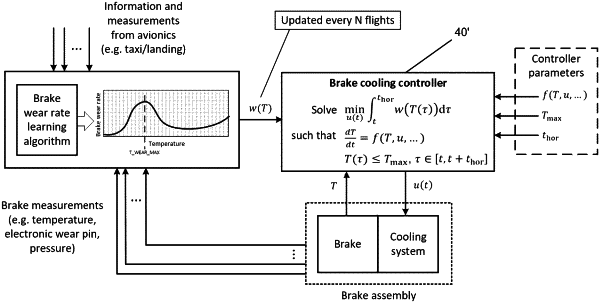| CPC B64C 25/426 (2013.01) [B60T 17/221 (2013.01); F16D 65/847 (2013.01); F16D 66/027 (2013.01); B60T 2270/86 (2013.01); F16D 2066/001 (2013.01); F16D 2066/006 (2013.01)] | 5 Claims |

|
1. A method of controlling cooling of a brake system, comprising:
determining a brake temperature;
obtaining a wear rate profile for the brake system indicative of wear rate in dependence on temperature; and
controlling activation of cooling of the brake system according to the wear rate profile;
wherein the activation of cooling is controlled according to a control variable determined according to the following optimization problem at each time instant t:
 such that T(τ)≤Tmax, τ∈[t,t+thor]
where:
w(T) is the brake wear rate as a function of its temperature T,
u is the control variable responsible for regulating the cooling
f (T, u, . . .) is a mathematical model describing the brake temperature evolution as a function of the same, of the cooling and of other variables,
Tmax is the maximum allowed brake temperature,
[t,t+thor] is the prediction horizon considered.
|